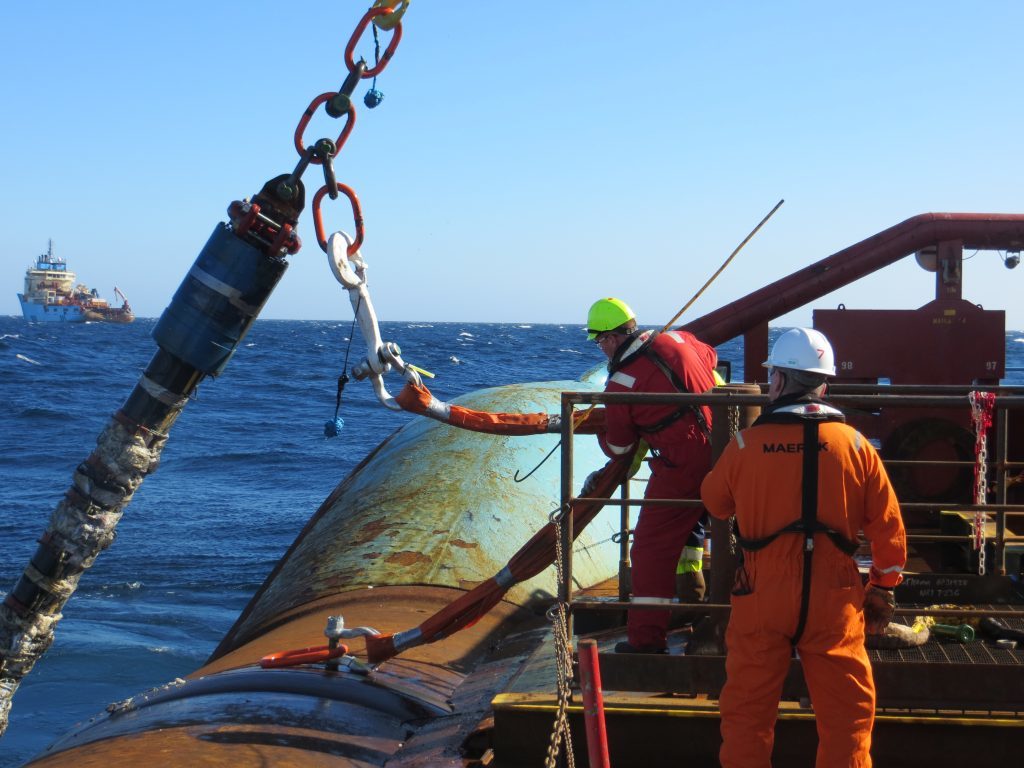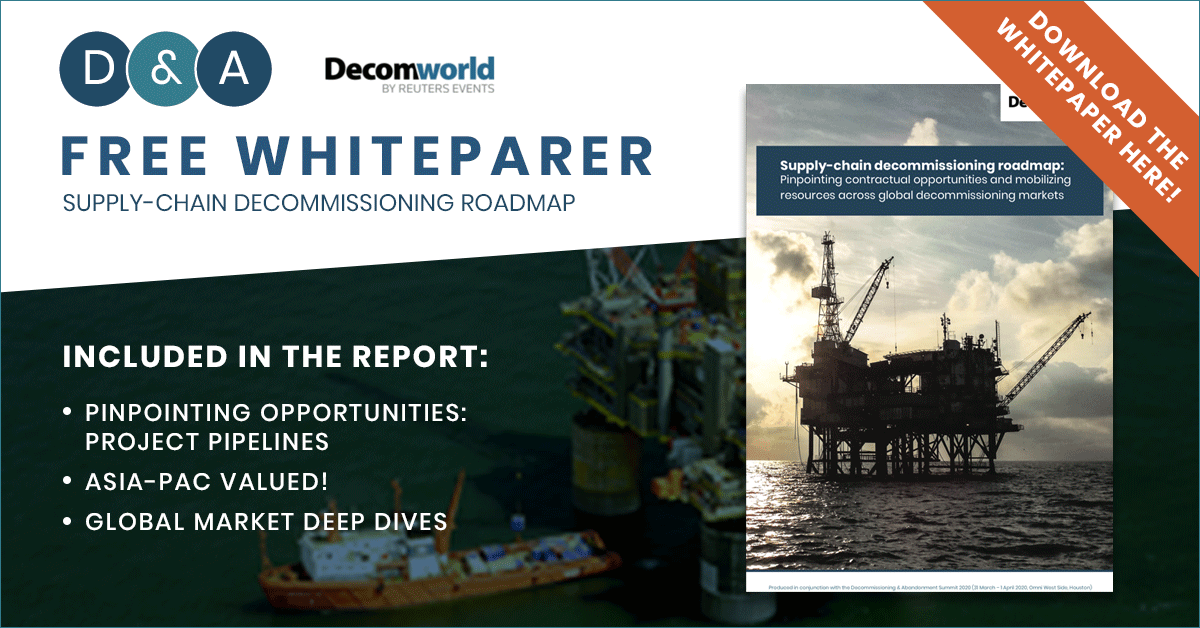
It’s no secret that the global decommissioning market is hotting up. With enormous opportunities in the pipeline, contracts are being rolled out across the globe over the next 12 months.
Asset inventories and market sizing calculations indicate the global decommissioning market is poised to surge over the coming decade, as early-stage regional markets get down to work on dismantling and plugging and abandoning ageing assets. Established markets are embarking on a new frontier of ever-complex assignments beyond the low hanging fruits successfully decommissioned to-date, and the fallout of this decade’s low-oil price climate expediates many assets’ end of profitability life.
While the bulk of global decommissioning expenditure is forecasted post-2022 when a $340 billion market will be opened-up, near-term prospects are strong.
A global spend of $38 billion will be required to decommission assets between 2018-2022, a >100% increase on the $18 billion spent over the 5-year period preceding 2018.
In the past two-years particularly, we have seen the supply-chain mobilising around traditional challenges and emerging opportunities, whilst driving through significant cost reductions for the sector by adopting a more integrated role within projects and onboarding broader business practices and technical know-how.
To-date the decommissioning supply-chain has been unsure about when to make the investments needed to capitalise on the opportunity decommissioning presents. As BHP Billiton’s Larry Johnson principal engineer of global decommissioning, told DecomWorld, “it is a perennial complaint from the supply-chain that the ‘wave’ is always just out of sight”.
DecomWorld has put together a brand new whitepaper that seeks to increase that line of sight, entitled Supply-chain decommissioning roadmap: Pinpointing contractual opportunities and mobilizing resources across global decommissioning markets.
You can request the report for free directly to your inbox here.
Recommended for you

